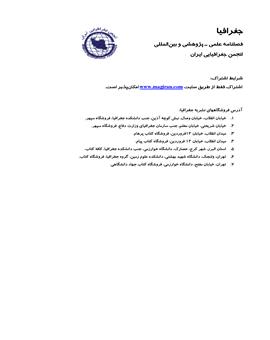Evaluation of Urban Smart Growth Indicators Using Factor Analysis Model (Case Study: District 1, Shiraz, Iran)
Subject Areas :Mohammad 1 , 2 , 3
1 -
2 -
3 -
Keywords: smart growth sustainable development compact city factor analysis, Shiraz city,
Abstract :
The Smart Growth Strategy is one of the new approaches to sustainable development. The present study is based on a descriptive-analytic method using a questionnaire, where the reliability of the research tool was obtained based on the Cronbach's alpha coefficient as 0.82. The statistical sample involved 321 citizens of District 1 of Shiraz. The data were analyzed using SPSS software. To achieve the research objective (determining the status of Smart growth indicators in District 1 of Shiraz(, a factor analysis test was used. The results of Bartlett's test of sphericity showed that there was a significant relationship between the urban Smart growth indexes studied in the study (with 0.000Sig), in fact, there was a significant correlation between variables. in the Criterion of the four factors density, "net residential density" with the factor load of 0.760, "public transport access or walking to work" with factor load of 0.820 and " using public transportation or walking to access the CBD” with: 0.790 were identified as the most important factors. Moreover, in the factor accessibility criteria, "rate of apartment living" with the factor load of 0.821, "ease of access to public transportation" with factor load of 0.570 and "rate of using public transport or walking for access to CBD", 0.539 were identified as the most important factors. Finally, in the field of mixed land use, “percentage of households in residential units”, "walking or public transportation access rate to recreational facilities" and "ease of access to public transportation" were identified as the most important factors.
